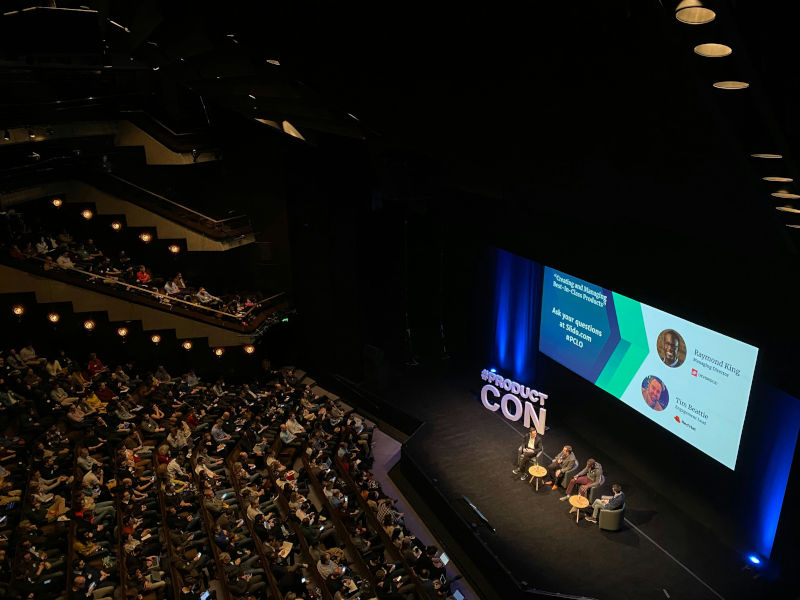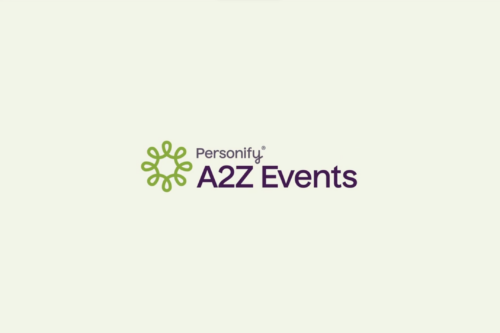Bringing in customers comes down to relationships. Customers want to feel as though businesses care about their needs and will help them resolve their pain points. Events provide you with the perfect opportunity to connect with your potential leads so that you can bring them into your sales funnel. This helps explain why the event industry is expected to hit $1,247.7 billion USD by 2030.
You are ready to take your events to the next level and channel your investment into bringing in qualified leads and driving conversions. The cornerstone of this effort lies in setting effective event goals. When you set the right goals, you know where you shine and what needs to be improved so that you can bring in new customers.
If you want to improve your use of event goals and monitoring, here is what you need to know.
What Are Event Goals?
Goals help you define what you want to accomplish with your event. Events offer you the tremendous potential to connect with leads and demonstrate your ability to resolve their pain points, but to run them effectively, you need to channel your resources to connect with specific segments of buyers.
Your event will take on a different tone if you want to connect with a particular audience or people at a certain stage in the sales funnel. Setting goals helps you define:
- Who you want to attend
- How you want to engage them
- What you want them to do after the event
Let’s explore how you can set effective goals and use them throughout the planning and execution stages.
How To Set Event Goals
Setting effective goals requires you to walk through a few steps. Each step will focus your thinking and help you zero in on what this event can do for you and for your leads.
Identify Your Event Objectives
With overarching event objectives, you look at the big-picture goals for what you want to do with your event. Will this event focus on building your pipeline? Or will your focus be closing deals? Do you have a particular audience segment you want to target?
Knowing what you want to accomplish allows you to prepare KPIs ahead of time, which will measure your success. It will also help you outline and plan your event to address customer needs and how the event will fit with your broader marketing goals.
When you have a specific customer in mind, you can tailor your event to address specific customer priorities, which helps you build your relationship with leads and show that you are paying attention to their pain points.
Use SMART Goals
Of course, setting goals themselves requires thought. If you just say that you want to “host an event that improves sales rates,” it becomes very hard to measure. Similarly, if you expect a single event to boost conversions by 200%, that might be completely impossible based on your current business size. SMART goal frameworks force you to think carefully about how to set effective and achievable goals.
SMART goals will meet the following criteria:
- S: Specific
- M: Measurable
- A: Achievable
- R: Relevant
- T: Time-bound
Defining your goals using this framework gives you clear KPIs to use throughout the event and a framework of the results you can present to your business leaders.
Define How You’ll Measure Your Goals
Once you start planning your event, decide ahead of time how you will measure your progress. Tracking your metrics for the different goals lets you know how your event measures up to your standards. If you notice a problem during the event, you can quickly change direction and improve your success.
When you look back on your event, you can also find areas to improve your plan in the future. Knowing how your event performs can also help you present the value of your events to your company heads.
Fortunately, platforms like A2Z simplify the process of measuring event success. With this platform, event organizers have access to a wealth of data about their event and their attendees, so you can see how people respond to your event and how it advances you closer to your business goals.
Match Goals to Your Event Marketing Strategy
As you build your event goals, work with the rest of the marketing team to ensure alignment between your event goals and the strategy of the rest of the marketing department. When you have a strong alignment between these two components, you will strengthen your business’s overall performance.
For example, you can work together to bolster leads entering the sales funnel or improve the rates of people who move from marketing-qualified leads to sales-qualified leads.
Event Goal Examples
You will likely have a variety of different event goals for your upcoming event. Your goals will help you see how you want to interact with your attendees based on their current position in the marketing funnel and any unique audience interests. Your target goals will relate to your audience and their needs.
It helps to break your goals up into three main categories:
- Top-of-funnel goals: which relate to those just preparing to enter your sales funnel.
- Middle-of-funnel goals: which relate to those who have entered your funnel and have begun to progress closer to conversion
- Bottom-of-funnel goals: which relate to those leads who are on the verge of conversion, and you want to encourage them to make a purchase.
Let’s look at each of these categories as they relate to events and the types of goals you might use for this type of lead engagement.
Top-of-Funnel Event Goals
When we speak of leads who are at the top of the funnel, we are talking about those with whom you are just beginning to initiate a relationship. When you interact with these leads, you focus on providing them with information about your industry and educating them on issues that matter to them.
You offer insight into their targeted pain points and demonstrate that you and your brand understand their struggles. Overall, you focus on providing them with a positive impression of your brand, so the lead comes back to you again later.
Here are some specific KPIs and goals you might use when you want to focus on building the top of your funnel and increasing the number of people you can classify as ‘leads’.
Attendee engagement
You want attendees at your events to show an active interest in your organization and what you have to offer. Ideally, they should actively engage with your business representatives and what they have to say. At an event, this might look like tracking:
- How often people participate in polls or surveys you administer
- How often attendees participate in the question-and-answer sessions
- How much time people log at your booth
- How long people remain logged into a virtual event
Brand awareness
To build your funnel, you also want to build brand awareness. You want people in your target audience segments to become more aware of your business within your industry. When people have a question about your specialty, you want your name to come to mind and your brand to be recognized when people encounter it in their research.
To track your brand awareness metrics, you might look at:
- Brand mentions and shares on social media about your event
- Traffic to your website surrounding your event
- Searches for your brand and your event
Registrations
The number of registrations you secure will give you insight into the number of people you reach with your event and how many find it interesting. Seeing increases in the rates of registration can also help you gauge how your business recognition grows and how well your marketing efforts for your event work.
To track this KPI, you will simply monitor the number of people who register for your event. To better understand the effectiveness of your different marketing strategies for your event, it helps to track how the attendees find your event and what inspires them to sign up.
Net New Pipeline
As leads become more engaged with your organization, they will naturally gravitate towards becoming Marketing Qualified Leads (MQLs) if your efforts land the way you intend them to. To see how well your event does the job, you can track results by looking at KPIs such as:
- The percentage of registrations who attend the event
- The percentage of attendees that go on to become MQLs
Session & Workshop Attendance
The interest your attendees show in your different sessions and workshops also provides insight into their interest in your event and how well your planned itinerary aligns with their needs. Track:
- The number of people who attend your different segments
- The engagement rates during the segments
This information will help you improve your event management and alignment with lead interests.
Middle-of-Funnel Event Goals
With leads who have reached the middle of the funnel, you can be confident that they have shown some interest in your business and your solution to their pain point. They have demonstrated genuine regard for resolving their issue and see you as a potential answer.
Leads who have reached this portion of the sales funnel have begun to evaluate the different options available to them and have taken their initial steps toward making a final purchase. This is your opportunity to show them why you outshine the competition.
Sales conversations
An excellent indication that a lead has begun to seriously consider your product or service as an answer to their problem is their engagement with your sales team. One-on-one sales conversations give your sales team the chance to engage directly with your lead and show them on a personal level what makes your business superior. They have the chance to nurture interest in your business.
If this is your area of focus, measure:
- The number of 1:1 conversations your sales team has during the event
- The number of attendees who schedule specific sales conversations or otherwise engage directly with your sales team and ask questions
- The number of questions that come in during your event that relate specifically to your products and services.
Demos
Demos show precisely how your product or service works and help leaders envision how this solution will work for them. Those who seek out product demonstrations clearly indicate that they want to see how your product works, so they can start considering whether it will fit their needs. We recommend:
- Track the number of people who stop by any demo booths you set up during the event
- Measure the rate of leads who sign up to receive a product demo following the event
Qualified Leads
Qualified leads show through their overall behavior and interactions with your business that they are ready to move forward in the buying process and start working their way toward conversion.
To qualify a lead, you want to look at a variety of different parts of the customer profile, including how well they fit in your target market and the interest and intent they show. Through your event, you can look at metrics such as:
- Information the lead provides about their needs and business demographics during the registration process
- The questions the lead asks that indicate their priorities
- Steps the lead takes during and after the event to engage further with your brand
- The sessions the lead participates in and their level of engagement.
Bottom-of-Funnel Event Goals
As you move into the bottom of the funnel, you consider your leads who have begun to seriously consider conversion. They have engaged in conversations with your team and are preparing to make their final decision about what business they want to buy from.
For leads who have reached this part of the buyer’s journey, your focus is on providing them with reassurance that you understand their needs and have the best possible solution to resolve their pain point. During the event, you focus on cementing your relationship with these leads and demonstrating your concern for their priorities. Let’s look at some things you might measure for leads at this stage.
Revenue
First, you might look at your revenue. Consider the number of SQLs that close following the event. You can also monitor our customer-relationships management platform to see what your attendees do following the event and the percentage of the attribution that should go to your event.
Return on Investment (ROI)
Your ROI measurements focus on comparing the expenses that went into creating the event compared to the revenue that can be attributed to the event.
This can be calculated by looking at a few different points.
- Consider the conversions that arise directly from the event, such as SQLs who ask for a demo and make the decision to buy directly following your event.
- Consider the number of new leads you bring into the event and the average conversion rate and value for new leads.
- Look at the touchpoints that your attendees hit and how these points influence your overall pipeline metrics.
Pipeline Velocity
When you get leads to progress from being an MQL to an SQL faster, you can also spur the growth of your business. You want to decrease the time it takes to bring people through the pipeline to conversion.
Fortunately, you can quickly gauge the impact of your events on the pipeline velocity by comparing the statistics of your leads who do and do not attend the event. See how much of their interest in your business and their drive to capture your business’s solution can be attributed to your events.
Closed Deals
Finally, consider closed deals themselves. During events, your team can engage directly with leads in a variety of different ways. From question-and-answer sessions to product demonstrations and one-to-one conversations, your team has the chance to build personal interactions with leads and show them that your business will serve them well.
Look at the closed deals that result from your event and track how this compares to past events. Consider both the revenue and the number of deals that result directly from the event.
Preparing for Your Next Event
Events are your chance to meet with potential customers face-to-face at all stages of the buyer’s journey. Setting well-planned event goals provides you with the guidance to channel your organizing energy effectively. You can create interactions that target precise customer needs and what your audience wants to see.
Fortunately, event management software, like the leading A2Z program, empowers you to effectively manage your event and track your KPIs. With organizational features like registration management and floor plan creators to capabilities such as mobile apps and check-in, it has never been easier to design and execute highly effective events. Come and see what A2Z can do for your next event.










